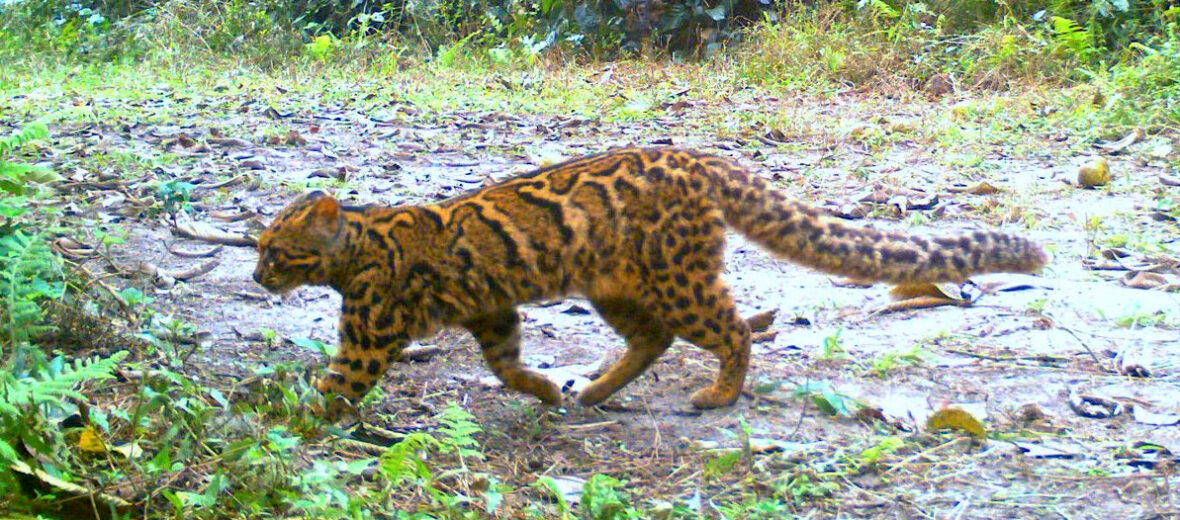
Looking like a miniature version of the famous snow leopard, the marbled cat hails from Nepal, south-eastern Asia, northern India, Sumatra, and Borneo. They prefer mixed deciduous-evergreen forests, secondary forests, clearings, rocky scrub regions, and 6 year old logged forests. Their ever-decreasing numbers have taken them down to only around 10,000 wild individuals. The IUCN lists them as Near Threatened. Marbled cats face the threats of habitat destruction, hunting, trapping, agricultural interference, and water supply reductions at the hands of dams.
First the Stats…
Scientific name: Pardofelis marmorata
Weight: Up to 7 lbs.
Length: Up to 1.7 feet, plus up to a 22 inch tail
Height: Up to 12 inches
Lifespan: Up to 12 years
Now on to the Facts!
1.) Marbled cats are arboreal (spend their lives in trees).
2.) They utilize their long, bushy tail as a counter balance, while navigating through the trees.
3.) These critters are nocturnal (active at night).
4.) Like most other cats, the marbled cat is solitary. Only coming together to mate.
5.) A group of cats is called a clowder, clutter, destruction, or pounce.
But wait, there’s more on the marbled cat!
6.) Their territory typically covers about 2.2 square miles.
7.) The claws of the marbled cat are double-sheathed and fully retractable.
Did you know…?
These cats, like other cats, can hear ultrasonic sounds.
8.) They can also purr, just like domestic cats. The purring is capable of being continuous, unlike the purring of larger cats, that can only purr while exhaling. This is due to the formation of the hyoid bones in their throat.
9.) Their meow is more of a chirping sound, as opposed to a continual sound, like in house cats.
10.) Marbled cats prey on birds (up to the size of pheasants), tree shrews, tree squirrels, rats, mice, fruit bats, small primates, frogs, lizards, and insects.
But wait, there’s still more on the marbled cat!
11.) Like other cats, males are polygynous (1 male mates with multiple females).
12.) Females undergo up to an 81 day gestation (pregnancy) that produces up to 4 kittens.
Did you know…?
A typical cat’s heart rate is up to 140 BPM (beats per minute). This is nearly double that of a human’s heartbeat.
13.) The kittens are walking by 22 days and eating solid food by 59 days.
14.) Juvenile cats begin climbing trees at just 2 months old.
15.) Just like a human’s fingerprints, the nasal patterns, or prints, of a cat are all unique.
16.) Marbled cats have been around for approximately 13 million years.
Now a Short Marbled Cat Video!
Be sure to share & comment below! Also, check out the Critter Science YouTube channel. Videos added frequently!
Want to suggest a critter for me to write about? Let me know here.



